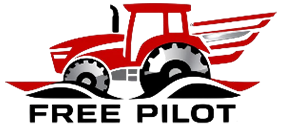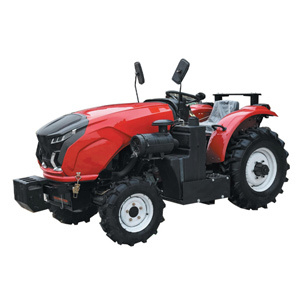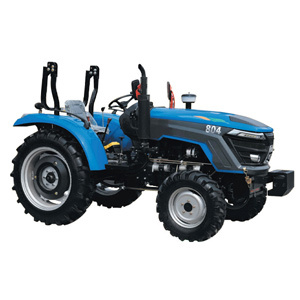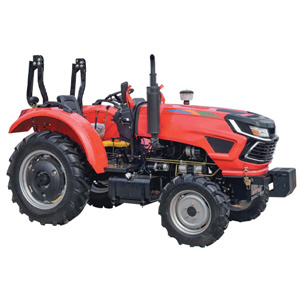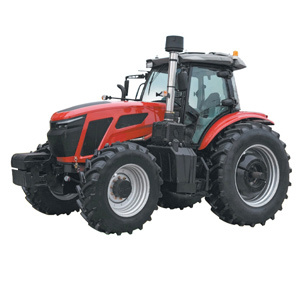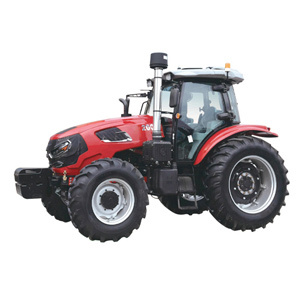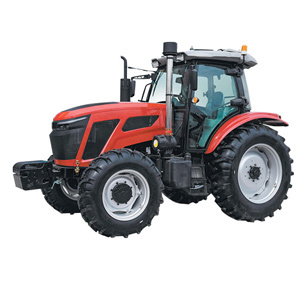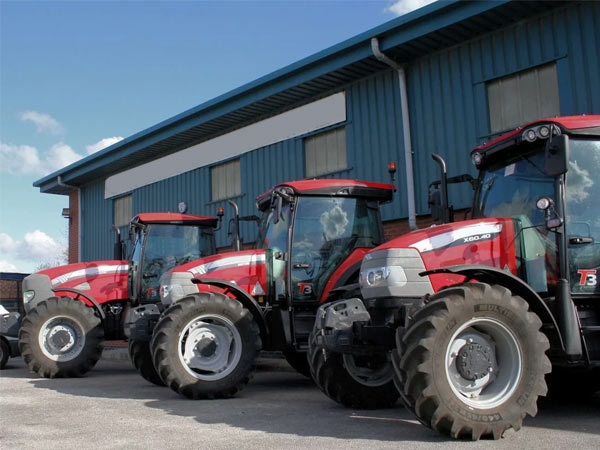Providing you with a one-stop solution for tractors
Tweak These 3 Settings and Cut Your Tractor's Fuel Consumption by 10%
Release time:
2025-10-27
Fuel is one of the biggest ongoing costs in farming. While buying an efficient tractor is the first step, many operators overlook the significant fuel savings that can be found in simple, correct adjustments. You don't need a mechanic for these. By mastering these three key parameters yourself, you can realistically aim to reduce your fuel consumption by 10% or more, saving money and increasing your profitability with every tank.
The Golden Rule: Measure to Manage
Before you start, establish a baseline. Note your typical fuel usage for a specific job (e.g., hours per tank or liters per hectare). After making these adjustments, repeat the same job and compare. The results will speak for themselves.
1. Engine RPM: The "Sweet Spot" for Efficiency
The Misconception: "More RPM means more power and faster work."
The Reality: Running the engine at full throttle constantly is a massive fuel waster. The goal is to find the optimal RPM for the task.
The Parameter to Adjust: The Throttle Lever.
The "How-To" Guide:
For Heavy Draft Work (Ploughing, Deep Tilling): You do need high RPM, often within the rated PTO speed (usually 540 or 1000 RPM). This ensures the engine produces maximum power and torque. Check your manual for the exact engine RPM to achieve the standard PTO speed.
For Medium/Light Loads (Cultivating, Mowing, Transport): This is where savings are found. Use the "Shift Up, Throttle Down" technique.
Start at a moderate throttle and begin working.
Gently shift to a higher gear.
If the engine doesn't lug down (lose RPM significantly), you can now slightly reduce the throttle.
Repeat until you find the highest gear and lowest engine RPM where the tractor can maintain speed and power without straining. The engine should sound smooth, not labored.
The Science: Running at 75-80% of rated RPM under partial load is often far more efficient than running at 100% throttle unnecessarily.
2. Hydraulic System Pressure: The "Invisible" Fuel Thief
Your hydraulic system is crucial, but excessive pressure creates constant internal resistance, forcing the engine to work harder and burn more fuel.
The Parameter to Adjust: Hydraulic Relief Valve Setting.
The "How-To" Guide:
Consult Your Manual First! Locate the main hydraulic relief valve. The correct test and adjustment procedure will be specified.
Use a Pressure Gauge: Connect a hydraulic pressure gauge to a remote coupler.
Test and Set: Deadhead the lever to activate the relief valve and read the pressure. Do not arbitrarily increase the pressure. Set it to the manufacturer's specified optimum for your implements. Over time, this setting can creep up; bringing it back to spec reduces the load on the hydraulic pump and engine.
Warning: This is a precision adjustment. If you are unsure, have your dealer's service technician perform it during a routine maintenance visit. Inform them you want the hydraulic pressure verified and set to the standard value.
3. Tire Pressure: The Foundation of Traction & Efficiency
Under-inflated tires are a double penalty: they increase rolling resistance and reduce traction, meaning your tractor has to work harder to do the same job.
The Parameter to Adjust: Tire Pressure (PSI/Bar).
The "How-To" Guide:
For Field Work (Max Traction): Lower the pressure. Softer, larger footprints provide better grip, reducing wheel slip. Aim for 12-15 PSI (0.8-1.0 bar) for radial tires in typical field conditions. Excessive wheel slip (over 15%) means you're burning fuel to spin wheels, not move forward.
For Road Transport (Max Durability & Safety): Increase the pressure. Higher pressure reduces heat buildup and rolling resistance at higher speeds. Inflate to the maximum pressure recommended on the tire sidewall for transport.
Invest in a Gauge: Don't guess. Use a high-quality tire pressure gauge and adjust based on the day's primary task.
The Science: Properly inflated tires can reduce rolling resistance by up to 20%. Combined with optimal ballasting for weight transfer, correct tire pressure is the easiest and most effective way to save fuel.
Conclusion: Small Tweaks, Big Savings
Fuel efficiency isn't just about the engine under the hood; it's about how you use the entire machine. By consciously managing your Engine RPM, ensuring your Hydraulic Pressure is correctly set, and meticulously maintaining your Tire Pressure, you take direct control over your operating costs. Start monitoring these three parameters today and watch your fuel efficiency—and your profitability—rise.
RELATED BLOG
